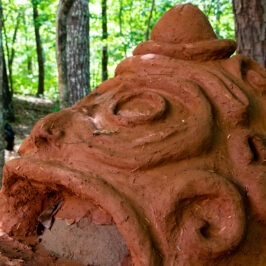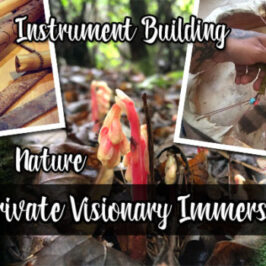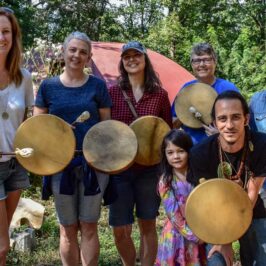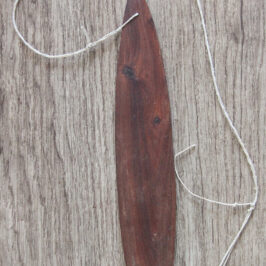
Hi! My name is Bradley and I’m here to share my recent Archaic Roots experience with the world. I attended this incredibly in-touch retreat on the first weekend of April this year and drove home with my own personal instrument.
 Archaic Roots, as you may know, is based in the serene North Georgia woods some five hours from Nashville. I was in the middle of my final semester of college at Vanderbilt and was desperately wanting for a grounding experience in nature. When I saw a mutual friend mark their interest in the event on Facebook, I knew it was exactly what I needed.
Archaic Roots, as you may know, is based in the serene North Georgia woods some five hours from Nashville. I was in the middle of my final semester of college at Vanderbilt and was desperately wanting for a grounding experience in nature. When I saw a mutual friend mark their interest in the event on Facebook, I knew it was exactly what I needed.
I haven’t had much experience with didgeridoos, apart from a simple PVC model I made at summer camp as a kid. Getting an instrument to take home is cool, of course, but I really think there’s something to be said for learning the skill of instrument crafting. Not only can you theoretically share the gift with friends and family in the future, but you learn something essential about the relationship between yourself and the earth when you work wood in your hands.

 So how did we do it? Well, Kennedy the didge master drove in with dozens of instruments in his van that he had made over the years. He travels the country collecting agave stalks, which come in over 200 varieties. Traditionally, Australian didgeridoos are made from eucalyptus stalks naturally hollowed out by termites. Under Kennedy’s direction, we endeavored to hollow the agave out ourselves.
So how did we do it? Well, Kennedy the didge master drove in with dozens of instruments in his van that he had made over the years. He travels the country collecting agave stalks, which come in over 200 varieties. Traditionally, Australian didgeridoos are made from eucalyptus stalks naturally hollowed out by termites. Under Kennedy’s direction, we endeavored to hollow the agave out ourselves.
First, however, we had to sand off our stalks. I chose a simple one that had originated in Arizona, which Kennedy said he had been traveling with for several years. Meanwhile, a central fire pit kept a half dozen rebar rods hot enough to melt away the sinewy agave innards. When I heard we’d be using hot rebar to hollow out our stalks, I thought this would necessitate protective gloves, but surprisingly, the far end of the rod was cool to the touch.
Working the hot bar into the stalk is a divinely sexual experience. All of us who participated felt very personally affected by the process, both as the recipient stalk and the heat-giving metal. It was invigorating, honestly. Plumes of smoke rise up in your face and your hands get covered in soot as you slowly burn away the wood’s inside material. It was definitely my favorite part of the process.
 We then had to make sure to patch any holes that could ruin the sound of the completed instrument. My stalk had termite holes everywhere, which worried me at first, but I figured out an easy way to take care of most of them. By taking a small stick, poking it through a hole, and breaking it off, you can form a natural plug that’s just the right size. Some of the greater holes required custom-cut wood slivers. Over all of these we applied glue, sanded, and left them to dry for the night. The next day, we completed our instruments with a lacquer Kennedy makes himself. The numerous holes in my Arizona stalk are now beautifully preserved with the contrasting color of the lighter Georgia wood.
We then had to make sure to patch any holes that could ruin the sound of the completed instrument. My stalk had termite holes everywhere, which worried me at first, but I figured out an easy way to take care of most of them. By taking a small stick, poking it through a hole, and breaking it off, you can form a natural plug that’s just the right size. Some of the greater holes required custom-cut wood slivers. Over all of these we applied glue, sanded, and left them to dry for the night. The next day, we completed our instruments with a lacquer Kennedy makes himself. The numerous holes in my Arizona stalk are now beautifully preserved with the contrasting color of the lighter Georgia wood.
Finally, we topped off our instruments with mouthpieces made from naturally-fallen California redwood. The rarity of this species was particularly meaningful to me. My final piece features pieces of nature from all over the country, including various regions I’ve called home.
If you ever get the opportunity to come out to one of Archaic Roots’ events, I highly recommend you follow your gut and do it. As I mentioned above, I’m not sure what I would’ve done this semester had it not been for some of the healing gatherings I found through diverse connections. Next Friday, I’ll write another guest post on the essential nature and benefit of transformative experiences—from a festival with 30,000 in attendance to an eight person gathering in the woods.







Amy Pesek
Hey, Bradley! Love your post. I remember trying to make my own didgeridoo from a broken tree branch and attempting to learn circular breathing when I was in middle school. Didn’t work out so well:)